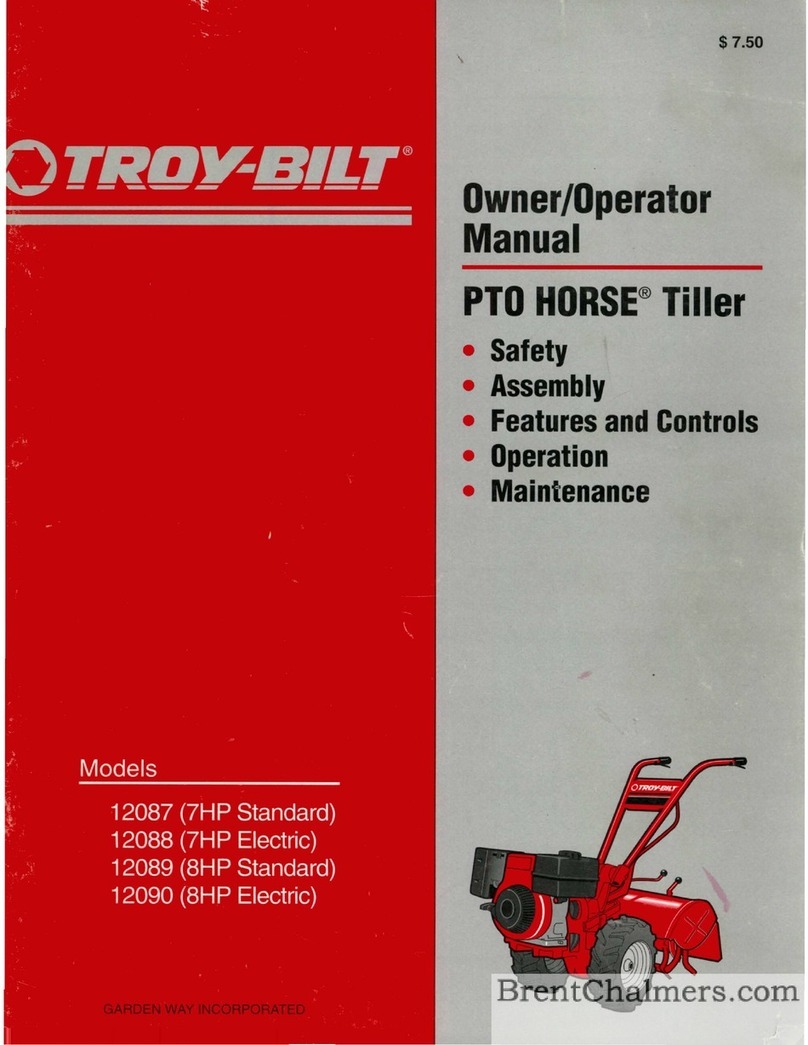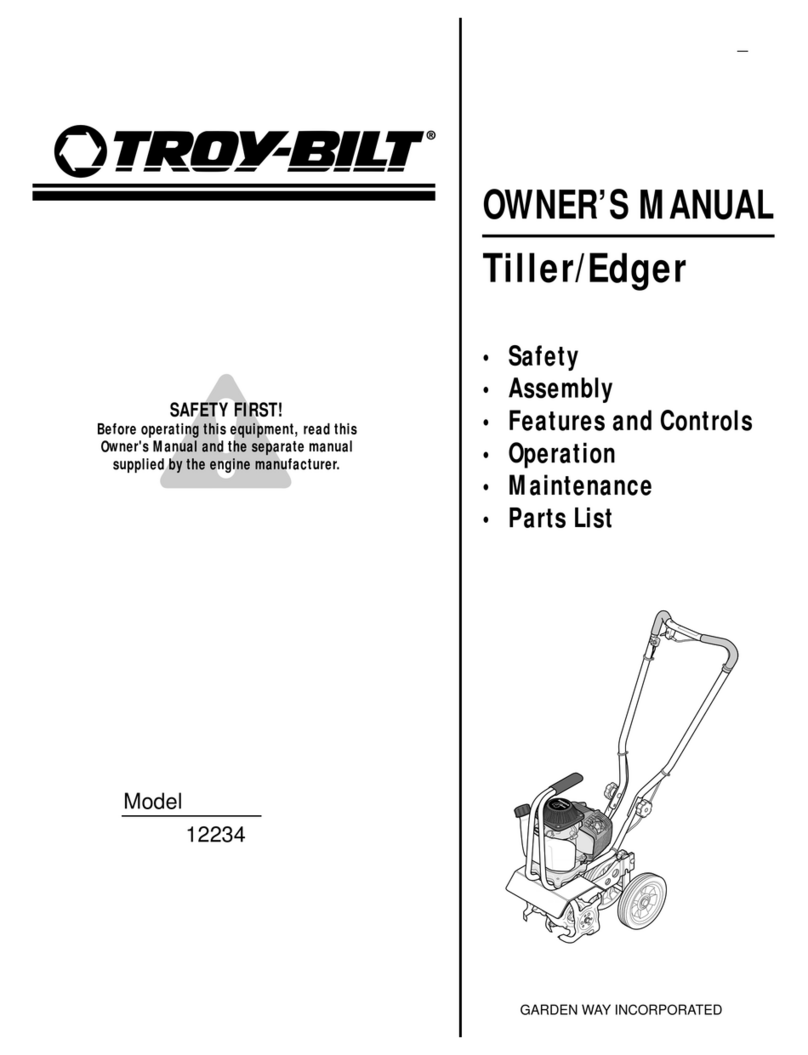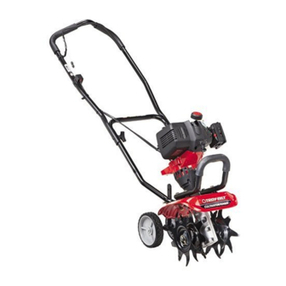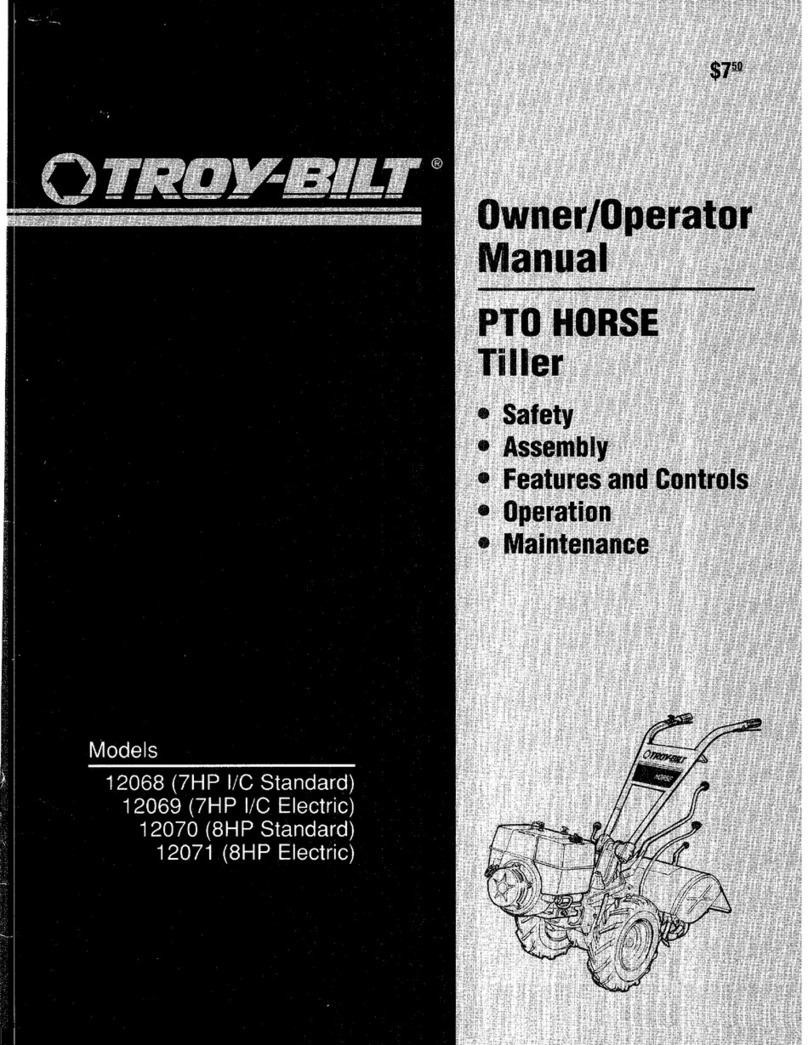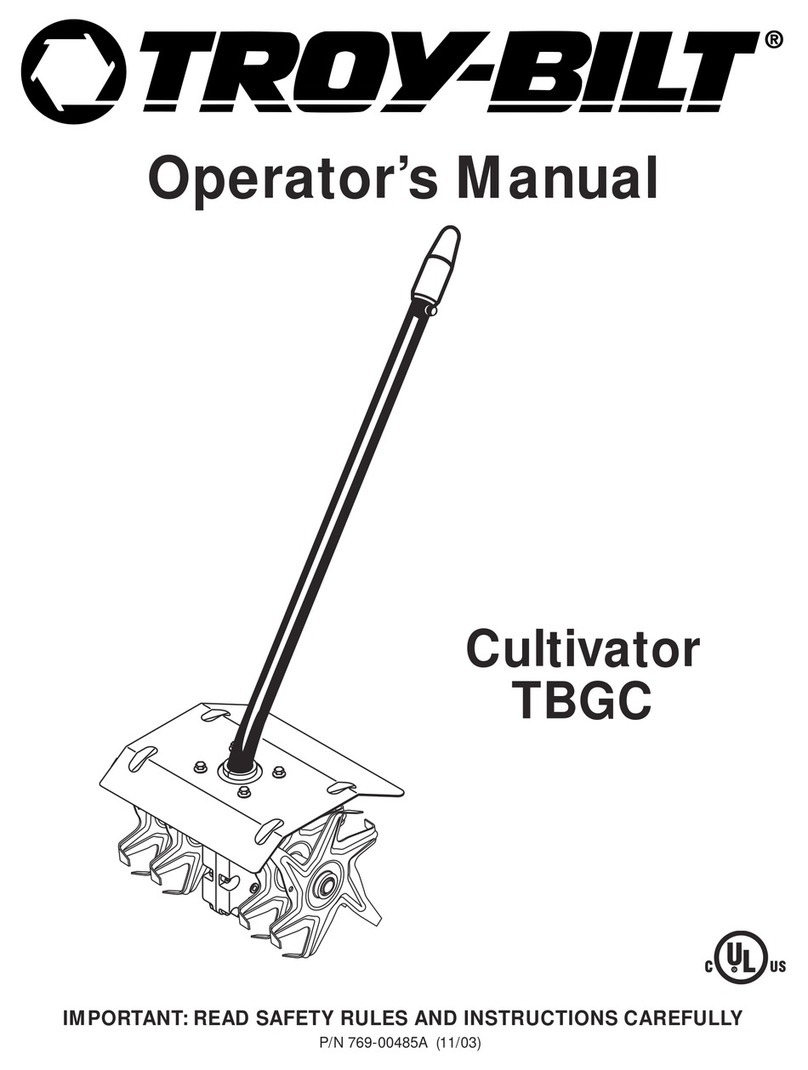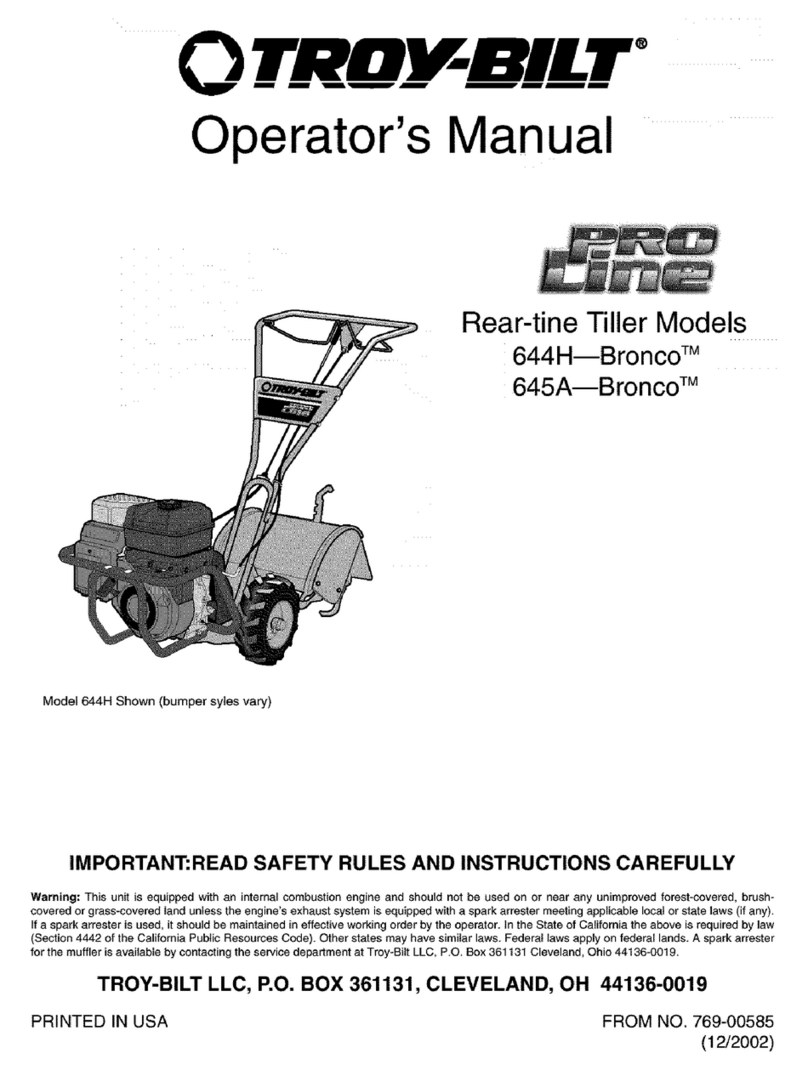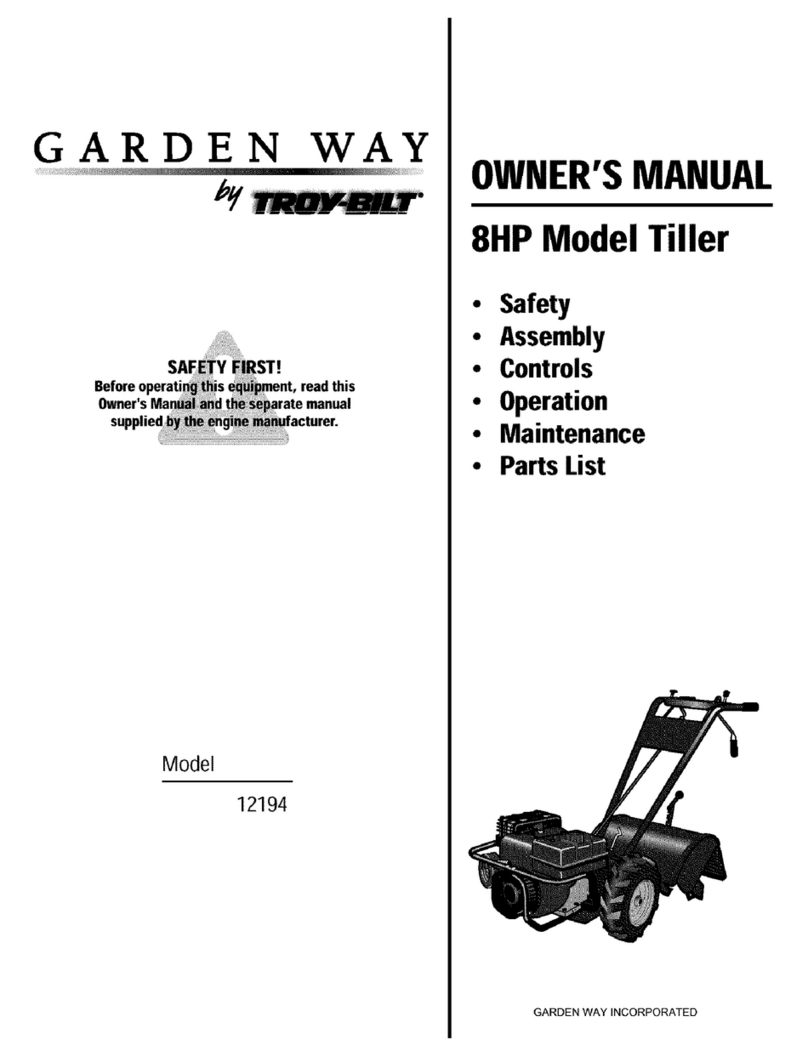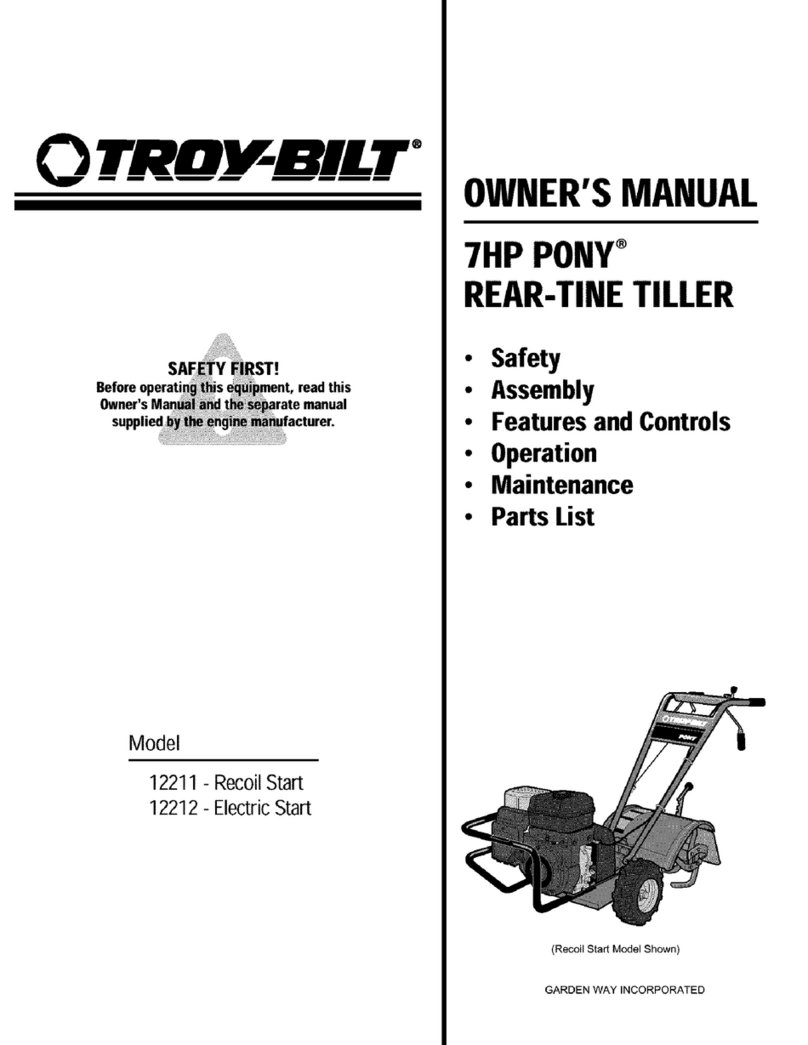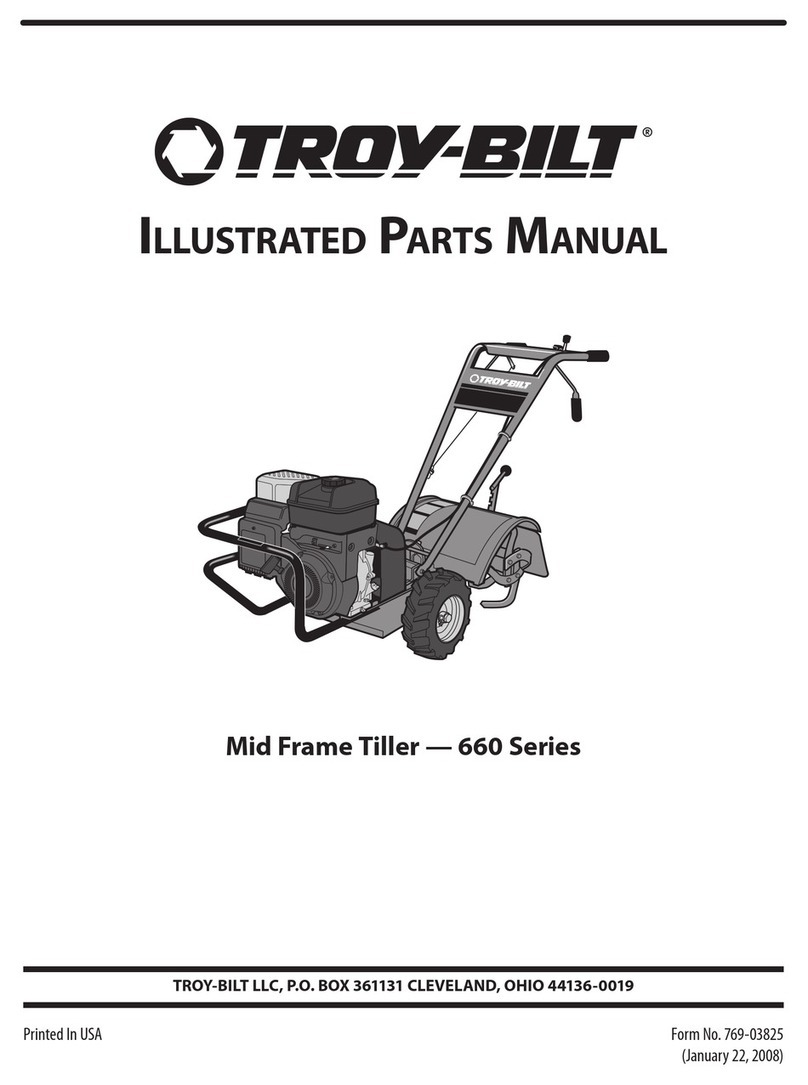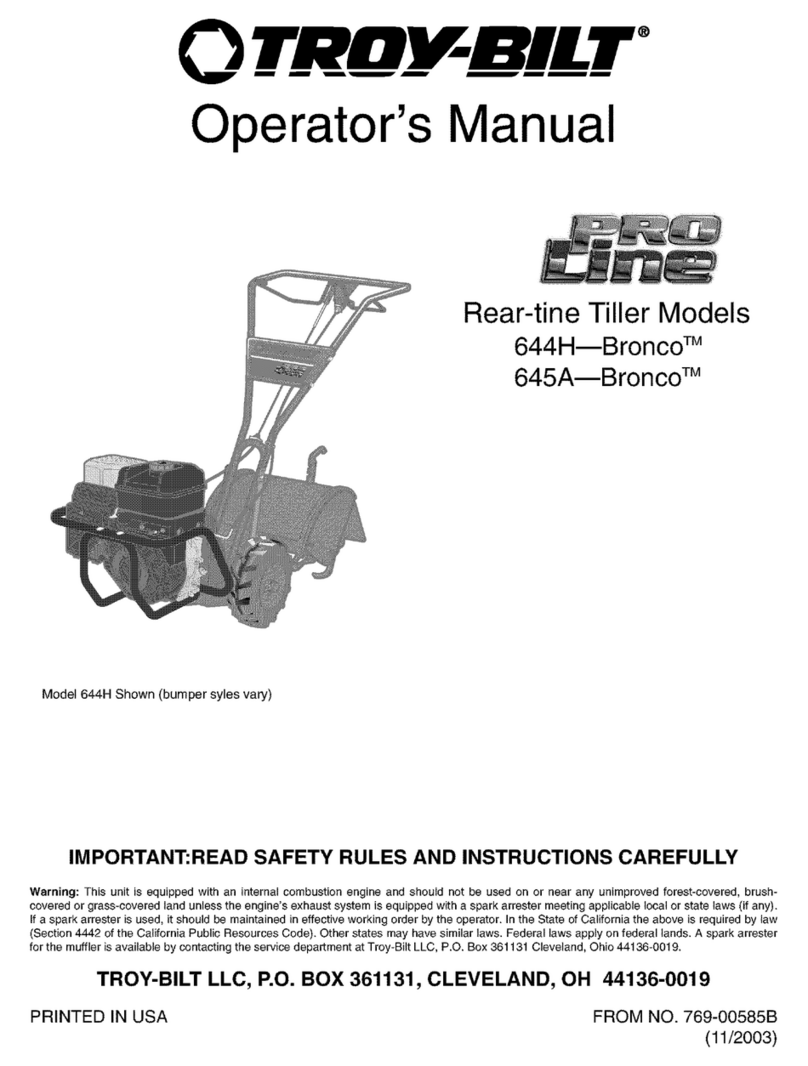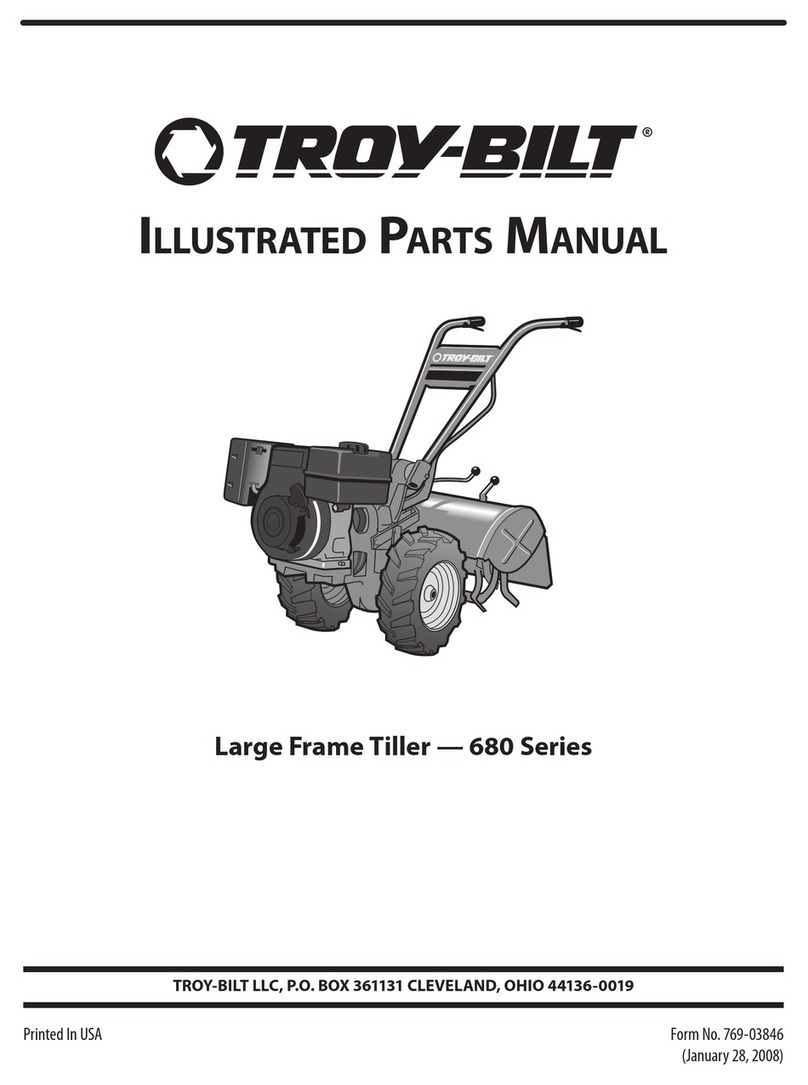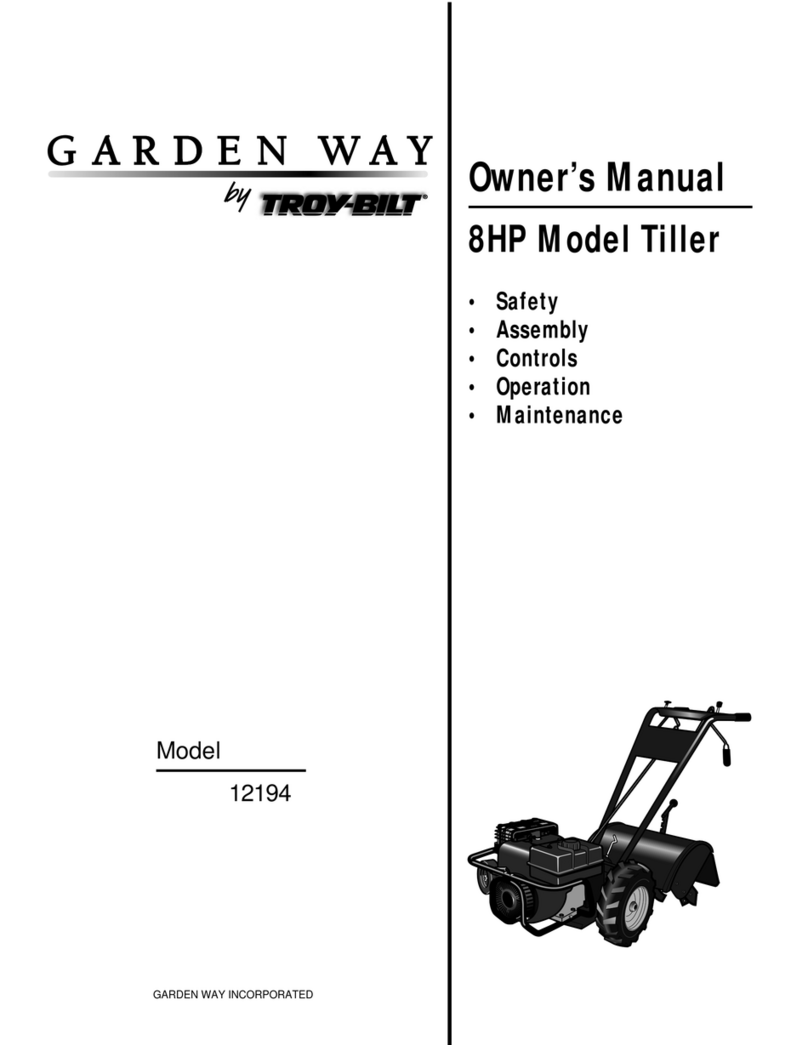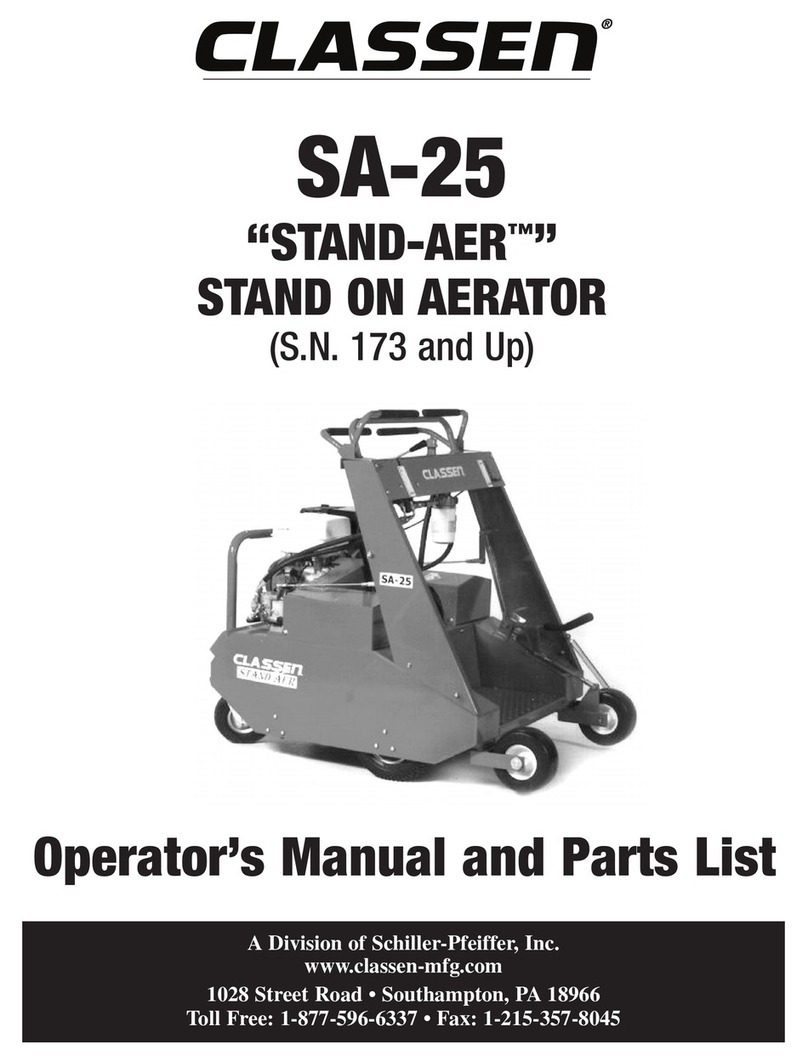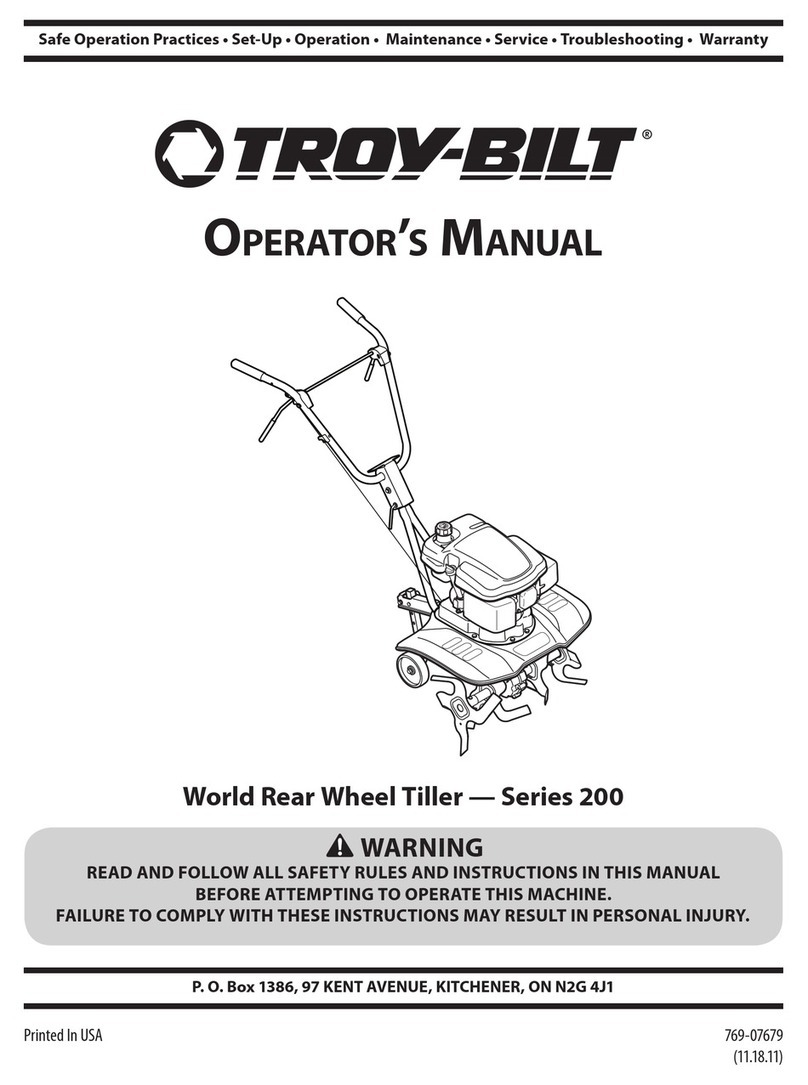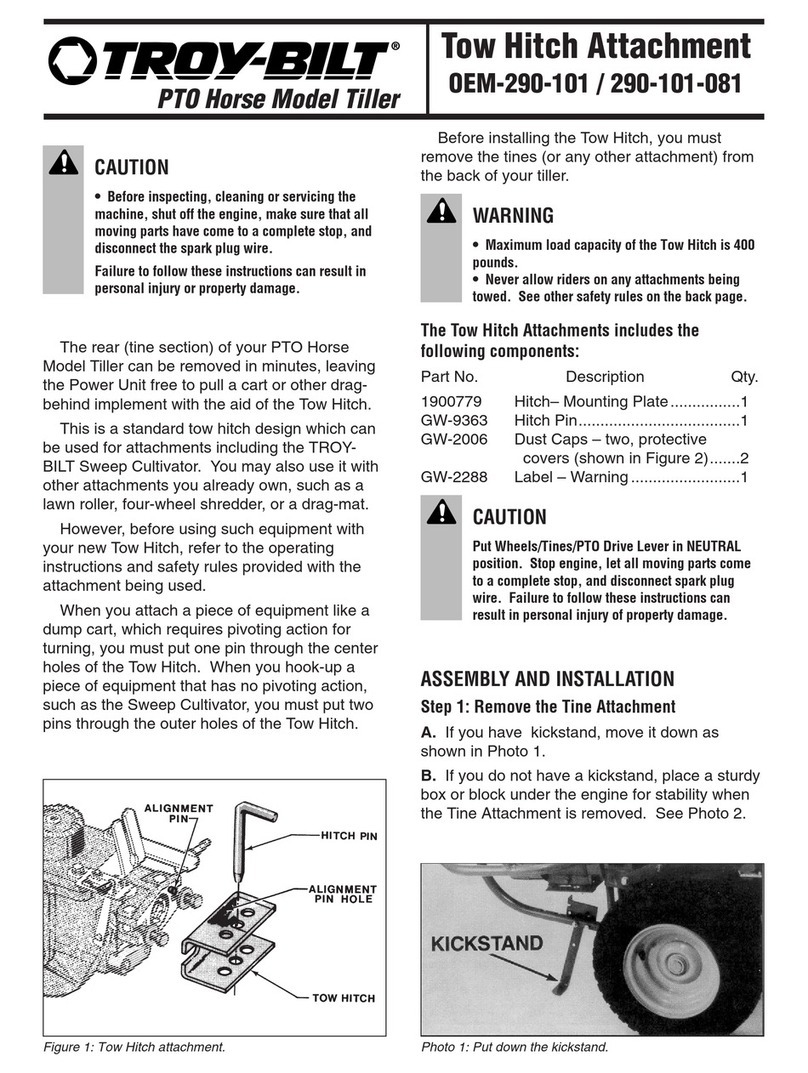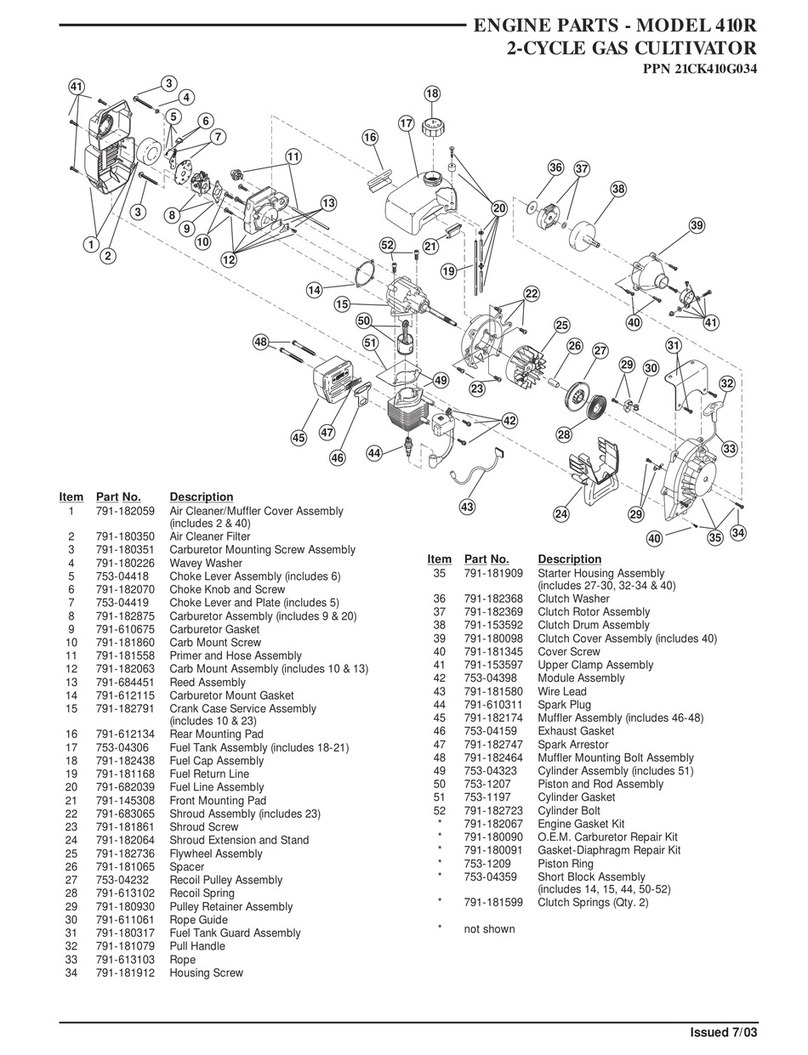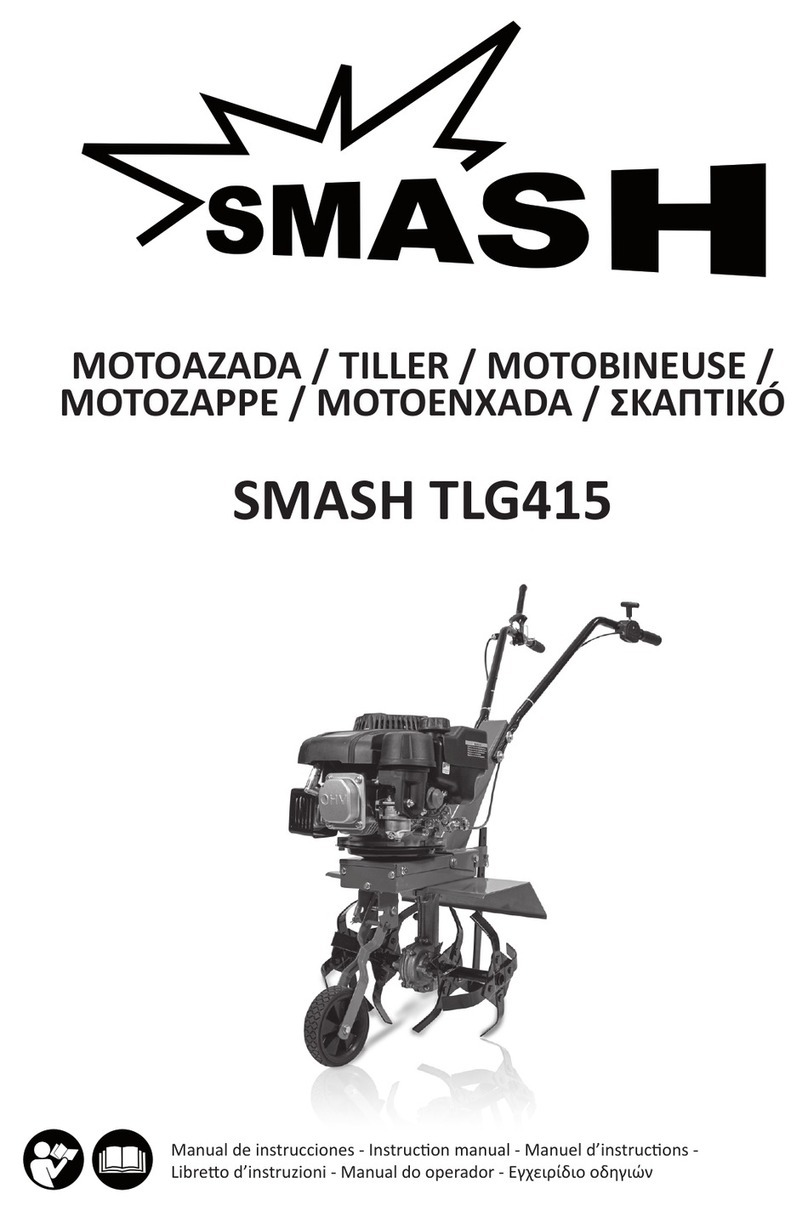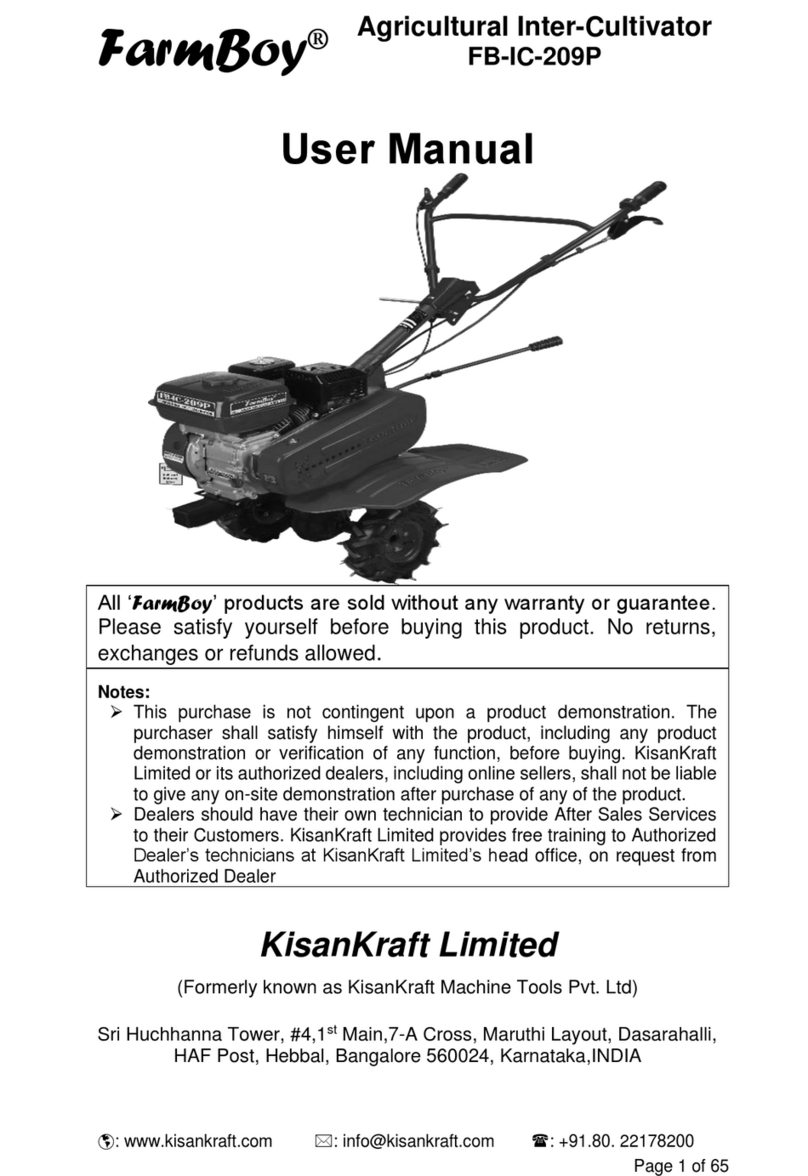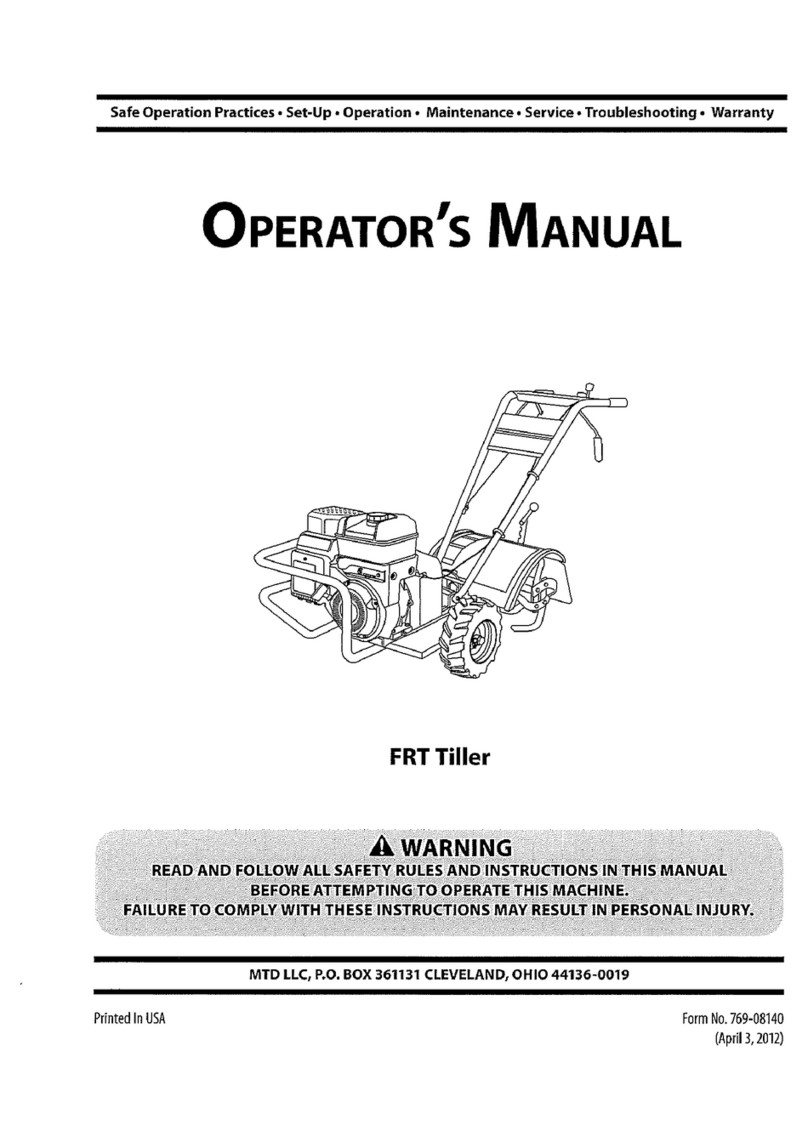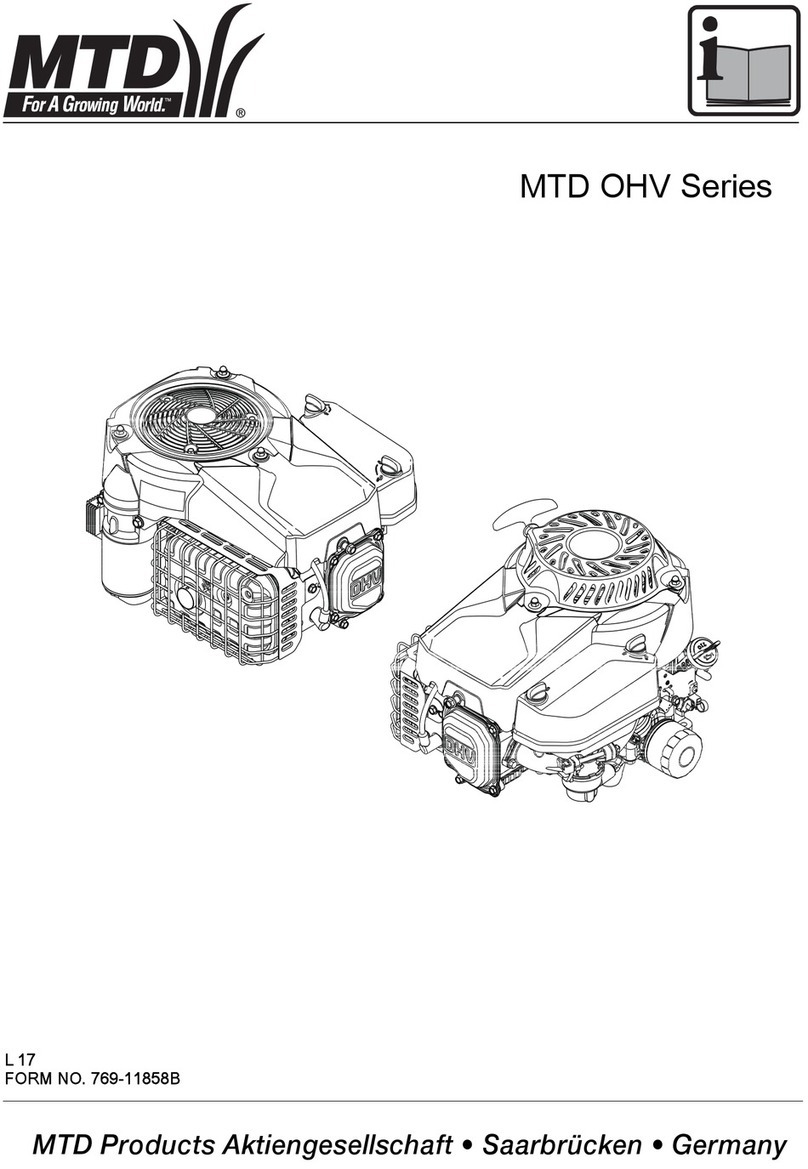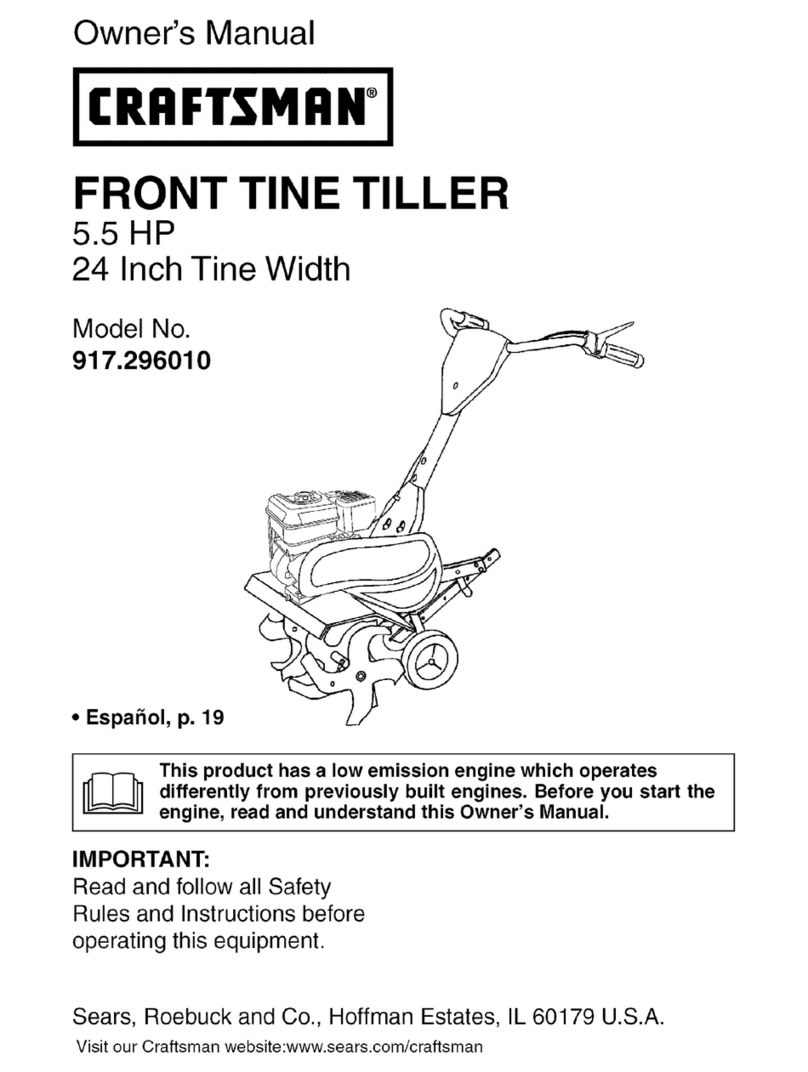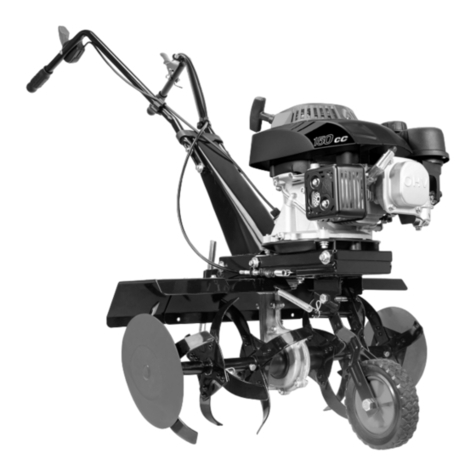
Section1: Safety
8. Beforecleaning, repairing, or inspect-
ing, stop the engine and make certain all
moving parts havestopped. Disconnect
the spark plug wire and prevent it from
touching thespark plug to preventacci-
dentalstarting.
9. Theflap on the tine hood must be
down when operatingthetiller, unless
using the Hiller/Furrower attachment.
10. Neverusethe tiller unless proper
guards, plates,or other safety protective
devicesare in place.
11. Donot run engine in anenclosed
area.Engineexhaustcontains carbon
monoxide gas, a deadlypoison that is
odorless, colorless, and tasteless.
12. Keepchildren and pets away.
13. Neveroperatethe tiller underengine
power if the WheelSpeedLeveris in the
FREEWHEELposition. In FREEWHEEL,
thewheels will not hold thetiller backand
the revolving tines could propel thetiller
rapidly, possibly causing loss of control.
Alwaysengagethe WheelSpeedLeverin
either FASTor SLOWposition before
starting the engine or engaging thetines
with theWheels/Tines/PTODrive Lever.
14. Beawarethatthetiller mayunex-
pectedlybounceupwardor jump
forwardifthetines shouldstrike
extremelyhardpackedsoil, frozen
ground,or buriedobstacleslike large
stones,roots, orstumps.If in doubt
aboutthetilling conditions,alwaysuse
thefollowingoperatingprecautionsto
assistyouin maintainingcontrolofthe
tiller:
a. Walk behindandto oneside ofthe
tiller, usingonehandonthe han-
dlebars.Relax yourarm, but usea
securehandgrip.
b. Useshallowerdepthregulator
settings,workinggraduallydeeper
with eachpass.
c. Useslowerwheel, tine and engine
speeds.
d. Clearthe tilling areaof all large
stones,rootsand otherdebris.
e. Avoidusingdownwardpressureon
handlebars.If need be, useslight
upwardpressureto keepthe tines
fromdiggingtoo deeply.
f. Beforecontactinghardpackedsoil
at the endof a row, reduceengine
speedand lift handlebarsto raise
tines outofthe soil.
g. In an emergency,stoptines and
wheels byshiftingthe
Wheels/Tines/PTODriveLever
intoNEUTRAL.If youcannot
reachthe lever or havelostcontrol
ofthetiller, let go ofthehandle-
barsand all controls. Do not
attempttorestrainthetiller.
15. Do not overloadthe tiller's capacity by
attempting to till too deeplyat too fast a
rate.
16. Never operatethe tiller at high
transport speedson hard or slippery
surfaces. Look behindand usecarewhen
backing up.
17. Do not operatethe tiller on aslope
that is too steep for safety.When on
slopes, slow downand makesure you
havegood footing. Never permit the tiller
to freewheel down slopes.
18. Neverallow bystandersnear the unit.
19. Onlyuseattachments and accessories
that are approved bythe manufacturer of
the tiller.
20. Usetiller attachments and acces-
sories when recommended.
21. Never operatethe tiller without good
visibility or light.
22. Never operatethe tiller if you are
tired, or under the influence of alcohol,
drugs or medication.
23. Operatorsshall nottamper with the
engine-governorsettings on the machine;
the governor controls the maximum safe
operating speedto protect the engineand
all moving parts from damagecaused by
overspeed. Authorized serviceshall be
sought if a problem exists.
24. Do nottouch engineparts which may
be hot from operation. Let parts cool
down sufficiently.
25. POISON/DANGER--CAUSES
SEVEREBURNS.The batteryon electric
start models contains sulfuric acid. Avoid
contact with skin, eyesor clothing. Keep
out of reachof children.
Antidotes:
External- Flushimmediately with lots of
water.
Internal- Drink largequantities of water
or milk. Followwith milk of magnesia,
beateneggs or vegetableoil. Calla
doctor immediately.
Eyes- Flushwith water for 15 minutes.
Getprompt medical attention.
26. DANGER-BATTERIESPRODUCE
EXPLOSIVEGASES. Keepsparks, flame
or smoking materialsaway. Ventilate
when charging batteryor using in an
enclosed space. Alwayswear safety
goggles when working near battery.
27. Pleaseremember:You canalways
stop the tines and wheels by releasingall
controls, or by moving the ignition switch
and/or throttle control leveron the engine
to OFFor STOP.
28. To load or unloadthe tiller, seethe
instructions in Section 4 of this Manual.
29. Useextremecaution when backing or
pulling the machinetowards you.
30. Startthe enginecarefully according to
instructions and with feet well awayfrom
the tines.
31. Neverpick up or carry a machine
while the engine is running.
32. When loading or unloadingthe tiller,
alwaysdisengagetines and useslower
wheel and enginethrottle speeds. Use
sturdy ramps wide and strong enough to
easily support the tiller (280-to-325 Ibs.,
depending on model) and operator.
Nevergo down ramps in FORWARD
drive--the tiller could tip forward,
exposing you to the tines (which should
be disengaged). Alwaysuse REVERSE
drive and backdown ramps. Togo up
ramps, useFORWARDdrive and follow
the tiller.
33. TheForward Interlock SafetySystem
should betested for correct functioning
every time thetiller or PTOpowerunit is
used. SeeSection 4 in this Manual.
34. If using the optional Dozer Blade,
either removethe tine attachment, or
disengagethe tines with the Tines/PTO
ClutchLever. Revolvingtines are
dangerous.
